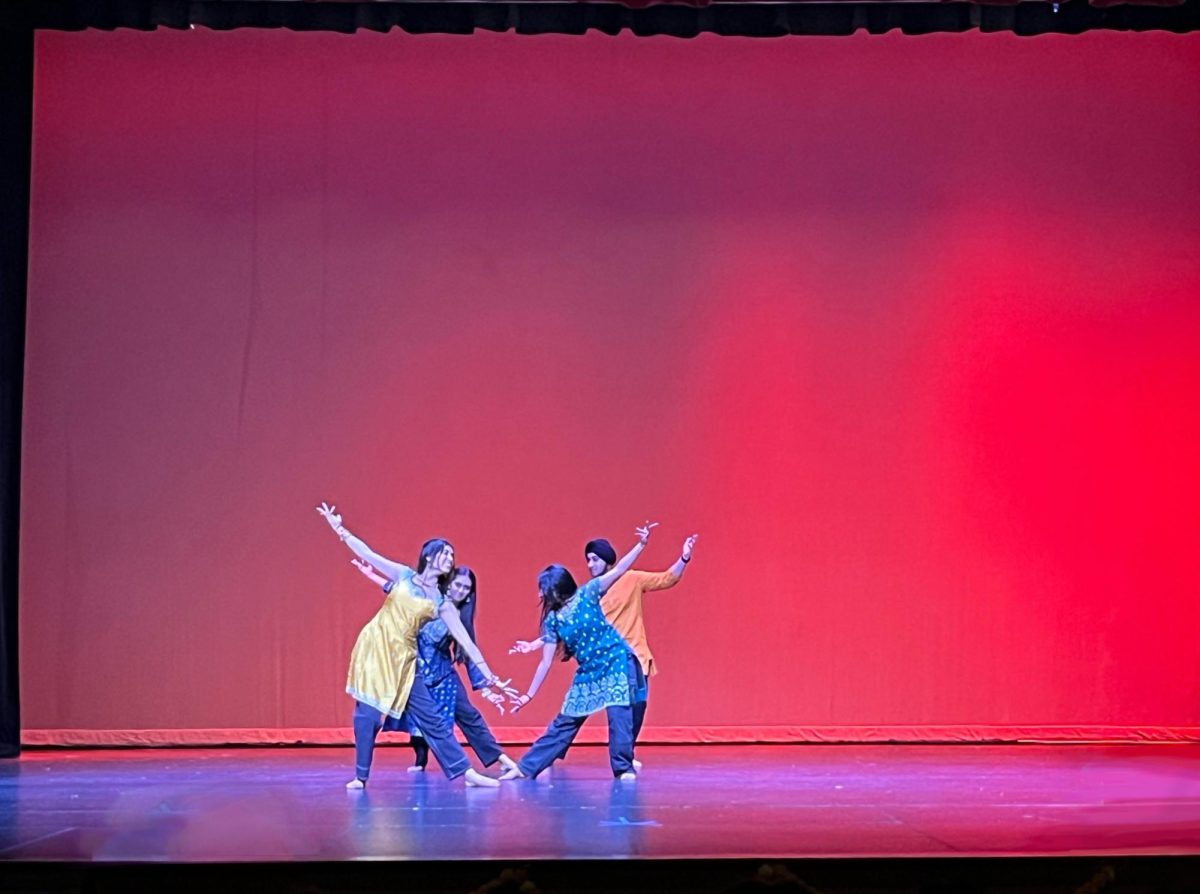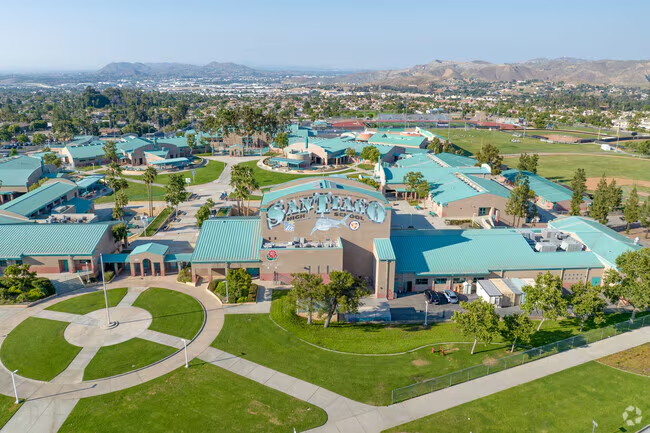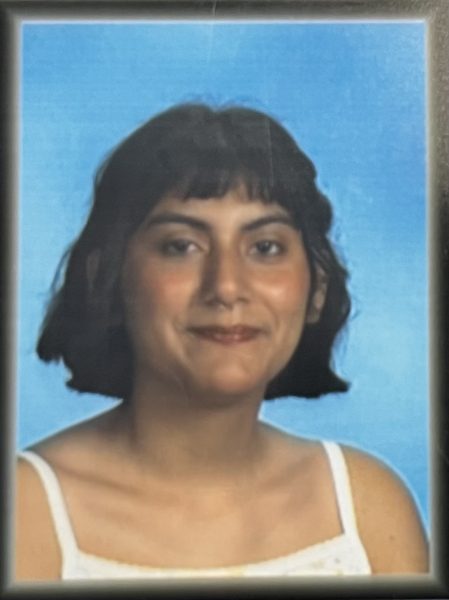Show Night
On March 15, the Indian Culture Association (ICA) held its annual showcase; it included many students displaying their dancing, singing, and fashion, all through the lens of their own cultures. Featured performers came not only from ICA and interested students but also from Santiago’s HipHop and Centennial’s Vietnamese Student Association (VSA). But the entertainment didn’t stop there; even audience members were invited to participate on stage to show off their moves on the dance floor and runway.
The curtains opened at 6:30 p.m. with a greeting from the officers and an opening number by the entire association, ready to start the night off. The next performance was an array of dragons and pink fans from Centennial’s VSA. This was followed up by dancing duo performances by Jasmine and Reet, then Natasha and Meghna. We then had another duo performance by matching blue-dressed guest dancers Ishika and Akhtar. Trevez McKay took the stage to sing a sweet-toned and passionate cover of SZA’s song “Saturn” to break the dancing streak. The officers again joined the stage for the last officer dance before intermission. Next on the itinerary was the fashion show, which I had assumed would be performed by the association’s members. You can imagine the surprise of everyone in the crowd who’d taken the same as the presenters invited audience members on stage to show off their outfits and walk the walk. The stage was quickly met with audience members eager for a runway moment. Once the audience fashion show was over, we were presented with the member’s version; it was indeed the year’s fashion show, filled with colorful and culturally representing garments from many backgrounds. And then to wind us back up during intermission. The seating area and lobby were filled with smiles, laughter, and hugs as friends and family congratulated their loved ones on a successful showcase so far.
7:40 p.m. rolled around, and the lights dimmed; intermission was over, and the show was starting again. The curtains again opened as they performed the middle dance, a classic in love stories. Natasha and Ria opened up the stage floor again to any willing audience members, but this time, it was a dance floor as they taught everyone a dance. Keeping the energetic dancing going was Santiago’s HipHop performing for the second time that day after the spring rally. This was followed by a Boy’s Dance performed by the male members of the association, all in matching black clothes. They continued to dance the night away shows from the NDM Trio, Ria, Sara, and Shreya, and KPop by Trevez and Meya. The night ended at 8:20 p.m. after the ICA ended, which was made up of many thanks to everyone who made the show possible.
Meeting With ICA
After the ordeal of the showcase wrapped up and the club had enough downtime, I got a chance to speak to them. I asked them a few questions about the performance, rehearsals, and what they expect for the club’s future. Natasha Dhamsania (12) is a 4-year member of the association and the President/Choreographer of ICA. Natasha is also part of other clubs like FBLA and Girl Up, where she takes the position of an officer. Ria Patel (12) is the Treasurer; this is her second year in the association. She is also the President of the school’s Treble Choir and the President of Cross-Cultural. Kenveer Sammi (12) is the secretary, and this is his second year in ICA. I also got the opportunity to speak to a member of ICA, Jillian Lopez (12). She’s been involved since last year, but this is her first year performing and dancing on stage. Here’s what they had to say…
I started by asking the President, Natasha Dhamsania, some questions about the show’s overall production and what it takes to get it done.
What were rehearsals like, and how long did it take you guys to be show-ready?
Natasha: “We’ve been practicing for 6 months—or actually, 7 months. We’ve been doing rehearsals. We had practices for, I would say, about 4 months, where we would have them every Friday for 1 hour and 15 minutes. For the last two months before the show, we had practices on Fridays and Sundays.”
During the showcase, you mentioned having to hold some rehearsals at your house.
Natasha: “Sunday practices were at my house. We rehearsed a lot and rehearsals were fun, people had fun learning dances and it was also kind of social. So it was a lot of fun.”
Whose idea was it, or was it a collective one, to include the audience on stage? And why did you guys decide to have that audience participation?
Natasha: “They had done that for previous years, and we were calling them “post buffers” because people were changing. A lot of people had 6-8 numbers, so those were for people who were changing. We were trying to make it more interactive for the audience members, so we decided to have more questionnaires, Simon says, and the dancing segment. [Not to mention the fashion show] So we thought that would engage the audience members.”
I know there was also participation from Hip-Hop and even the Centennial Vietnamese Student Association. Why did you choose them specifically, and how did that come about?
Natasha: “We contacted multiple school clubs and other organizations on campus, but these are the ones who said yes. So these are like—I would say a fourth of them said yes—which is just these two. But we basically invited all the culture clubs because we wanted to diversify our culture inclusion.”
What was the reason you decided to go out of campus for Centennial’s VSA?
“Our Santiago VSA, they didn’t want to do it, unfortunately. So we always had this show with VSA, so we reached out to the centennial one.”
Once we got those questions out of the way, I was able to get into some more personal questions about the inner workings of the association and its members.
Being an association that revolves around culture, I can only assume that there is a strong sense of community. What is that like, and how does it translate into your performance?
Natasha: “When we all first met, we had icebreakers to get to know each other, but then slowly, as we had more rehearsals, we all got to know each other a lot more, became friends, and got closer. So then, at that point, it was just more fun rehearsals rather than having it be practice so it’s more social, and we were talking about our cultures and our different backgrounds. So we got closer in that sense, and then that paid off in the show because we looked like one whole unison group, so it looked nice.”
Kenveer: “The core part of our club is bonding, so we all get together and dance. We’re all eager to learn and share our culture, and the majority of us, being Indian, are able to share common experiences and a couple of laughs, like key moments that we all have together.”
“Most of us have danced before, and the majority of our dance steps are classic steps that we perform at parties and weddings, all that stuff where we just celebrate. So it’s straightforward and like a sense of home when we’re dancing stuff like that.”
Ria: “We have so many practices together, and we have a good time, so it’s not like where we just come and practice- we mess around, and we have fun. So it’s like a time when we can connect and make new friends. Especially at the beginning, that’s when you first make new friends, and throughout the year you’re like collecting and bonding with the “team”. But it’s not a team because it’s like a group effort to put on a showcase- that’s a lot of work first of all, and second of all, you have to make sure everything goes right. I don’t know, you spend a lot of time with each other; it’s kind of a close family.”
So It’s like you grow together?
Ria: “Yeah.”
Do you feel that clubs like these, which are about culture, help people connect more with themselves and be more comfortable with who they are?
Ria: “Yeah. Yeah, and there are a lot of mixed people, and they also want to connect more with the culture, so they join the club. I know a few of the members of ICA joined for that same reason, and I think it helps them to connect with the culture as well.”
Kenveer: “If it wasn’t for this club, I don’t know where I would’ve met all these people who have the same sort of experience that I’ve had. Cultural clubs like these help unite people who maybe don’t know where to look for friends and companions; it’s just essential.”
A Members Experience
Apart from the association’s officers, Jillian helped me get the perspective of a member.
What made you realize that you wanted to join the club?
Jillian: “One of the things that made me realize was last year’s performance. I was in the audience, and I just thought that the performance was so pretty. I wanted to join too, to get the experience, and now that I joined, it was definitely worth it—I would say.”
Would you recommend that others join the club?
Jillian: “YES, I would definitely recommend it. Even though it may seem hard at first because I’m not really a dancer—I’ve never really been involved in Bollywood dancing before—it really helps you get out there. And it honestly helped me get rid of a lot of the freight that I had. Because I did feel like I had that, but once you’re up there, you just get used to it, and it definitely helps you feel more confident, too.”
With this being your first year, what does being a part of the performance feel like?
Jillian: “It’s an enjoyable experience because I got to connect with my culture, and I feel like there is not a lot of Indian representation in our city, and it was nice to have that and then build a community with a lot of people who can relate to me. You Know? So, I would say that.”
Some Closing Words
How do you feel about this being your last show, and what will you miss most?
Natasha: “Definitely, I think it was a successful show. I’m thrilled it went well and all our hard work paid off… But I’m going to miss the showcases and all my friends here; we’ve built like a family, so it’s not just friends. But I’m going to come back next year and watch the show.”
Ria: “I feel unfortunate that it’s my last show, and I was excited because it’s my last show but now that it’s over I’m sad that I don’t get another year with them. Just like we create another sort of a second family and get so close with the members and make new friends.”
Kenveer: “I started in ICA last year, so this is my second year, but I’ve been a part of dance my whole life- and I’ll continue it. I’ll be back next year, my sister’s joining the school so I’ll still be trying to help out, or stuff like that, so I won’t completely leave.”
Jillian: “It being my last performance, I wish I’d joined sooner because I didn’t realize how incredible the club would be. I feel like you get to meet a lot of people, and if you are someone like me who doesn’t know a lot of Indian girls at school, it’s a perfect way to get involved, meet people, make friends, and connect with your culture. So, I honestly wish that I’d joined sooner and was able to perform sooner.
I think what I’ll miss most are the Friday and Sunday practices that we had because not only did we practice, but I felt like I also got closer to a lot of the people, and I was able to make friends with people that I never really thought I would make friends with before.”
What do you expect for the club’s future with its participants and the showcase?
Natasha: “I hope that next year, and the years following, the club continues its tradition of having an annual showcase every year. I know we can have a great show next year. I hope they continue having each showcase, having more and more membership, and just letting it be for everyone and anyone.”
Ria: “I hope that more members feel comfortable to join. At first, I did not want to join because I wasn’t sure how it would be. I was too scared even to try it out, but then one of my friends who was already in it pushed me to join, so I did, and I realized that it’s such a fun and welcoming club, and there’s nothing to be embarrassed or ashamed of. I know a lot of people think like ‘Oh I’m Indian, like that’s embarrassing, I don’t want to embrace my culture,’- or whatever. But, coming into the club, I realized that- there’s nothing to be scared of, nothing to be embarrassed of; I mean, it’s a safe space.”
Kenveer: “Honestly, I feel it would be best if it stays like this for the rest of its future. It’s perfect; we have great officers, great members eager to learn, and a lot of people. We have almost double the number of people we had last year. We have many performances, and everybody wants to perform solos, trios, etc. So everybody wants to dance and join this club, and I hope it stays this way.”
What do you think caused that increase in size? What made people want to join?
Kenveer: “Last year, a lot of the people that joined either knew how to dance, or they’ve been a part of it since like their freshman year, but a lot of the people who joined are the friends, close friends, of the people who were here last year and just by seeing it from last year they wanted to join.”
Is there anything else you would like to add?
Their overall message
“I think people should join.”
I want to thank the ICA for giving me their time and letting me interview them about their fantastic performance on the 15th. If joining ICA is something you are interested in, I would recommend it. Spending just an evening with them will make you feel as instantly welcome as I did. You may even be as lucky as to get invited to join a game of heads up, seven up. Everyone is super friendly and welcoming; you can tell just by how a smile spread across their faces as they spoke of the community they’d built in the club.








